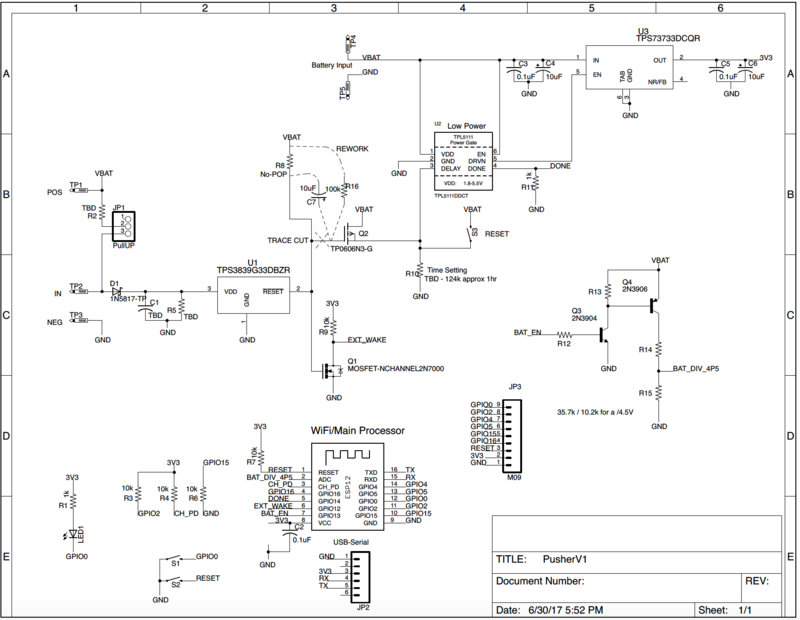Difference between revisions of "Pusher"
From Kevin Darrah Wiki
| Line 15: | Line 15: | ||
* Max Battery Voltage is ~4.2VDC, so designed to be used with standard Lithium Batteries. | * Max Battery Voltage is ~4.2VDC, so designed to be used with standard Lithium Batteries. | ||
* <span style="color:red">Note: this board does require re-work in order to exercise all of the functionality. Please watch assembly videos below for detailed information</span> | * <span style="color:red">Note: this board does require re-work in order to exercise all of the functionality. Please watch assembly videos below for detailed information</span> | ||
| + | |||
| + | Here's a quick demo! | ||
| + | |||
| + | {{#evt: | ||
| + | service=youtube | ||
| + | |id=https://www.youtube.com/watch?v=uZfLxPxB040 | ||
| + | |dimensions=560x315 | ||
| + | }} | ||
== Schematic == | == Schematic == | ||
| Line 47: | Line 55: | ||
== Tutorials == | == Tutorials == | ||
| − | Programming the board: | + | Programming and Testing the board: |
{{#evt: | {{#evt: | ||
Revision as of 17:40, 30 June 2017
...Back to Projects:
The Pusher Board is an IoT project that does one thing - it pushes you a notification triggered by a digital input. Well, it's much more than that, but this is the inspiration. I wanted to design a WiFi board that essentially sleeps most of its life, but when that door switch, flood sensor, motion sensor, etc.. gets triggered, I just want a notification immediately on my phone. And that's about it... a perfect IoT device in the background doing its job.
Version 1
Very first prototype board
- Mostly through hole components for easy testing and assembly
- ESP8266 based (ESP-12S module)
- Wake on regular timer interval - set for 1hr during my testing.
- Wake on Digital Input - Normally Closed type contact, so works nicely with door sensors.
- Tested sleep current <1uA that's years and years of battery life.
- Max Battery Voltage is ~4.2VDC, so designed to be used with standard Lithium Batteries.
- Note: this board does require re-work in order to exercise all of the functionality. Please watch assembly videos below for detailed information
Here's a quick demo!
Schematic
Purchase
given to Patrons ...
Parts
Parts list HERE
Assembly
Soldering the board together:
The rework changes:
Tutorials
Programming and Testing the board:
That Sample Code HERE
And if you're having problems getting the Arduino IDE setup, check out this video:
The .json url HERE

